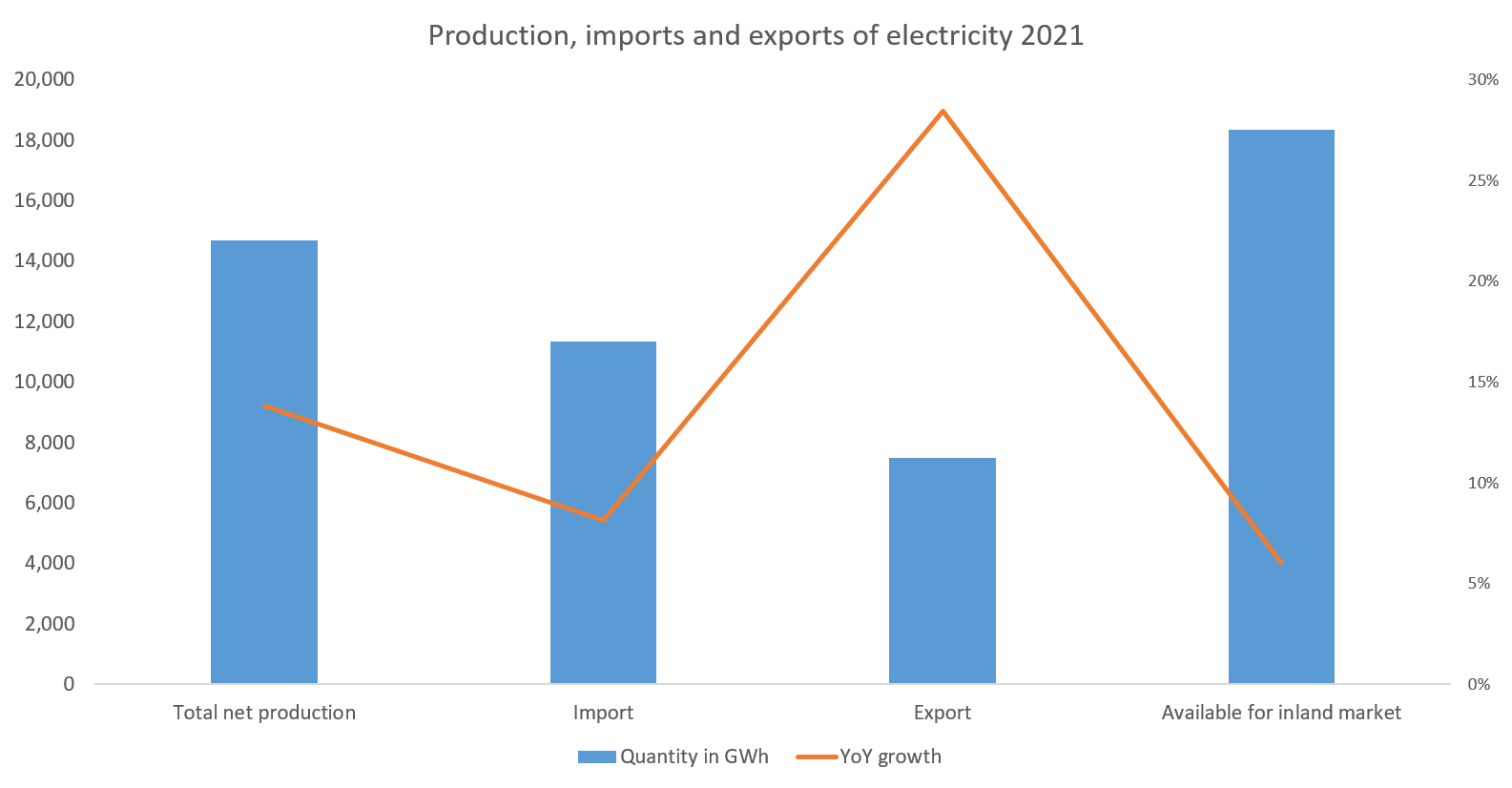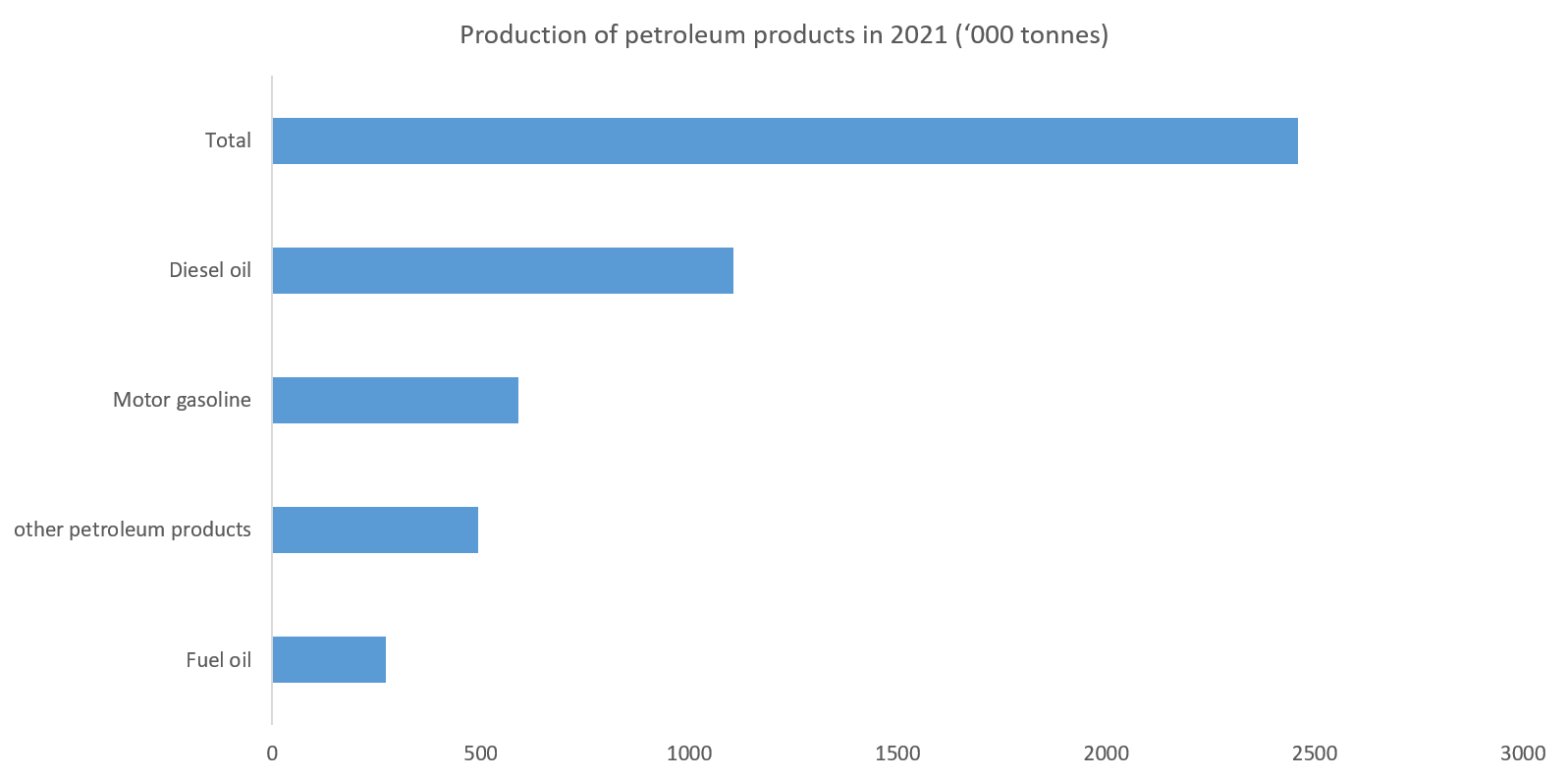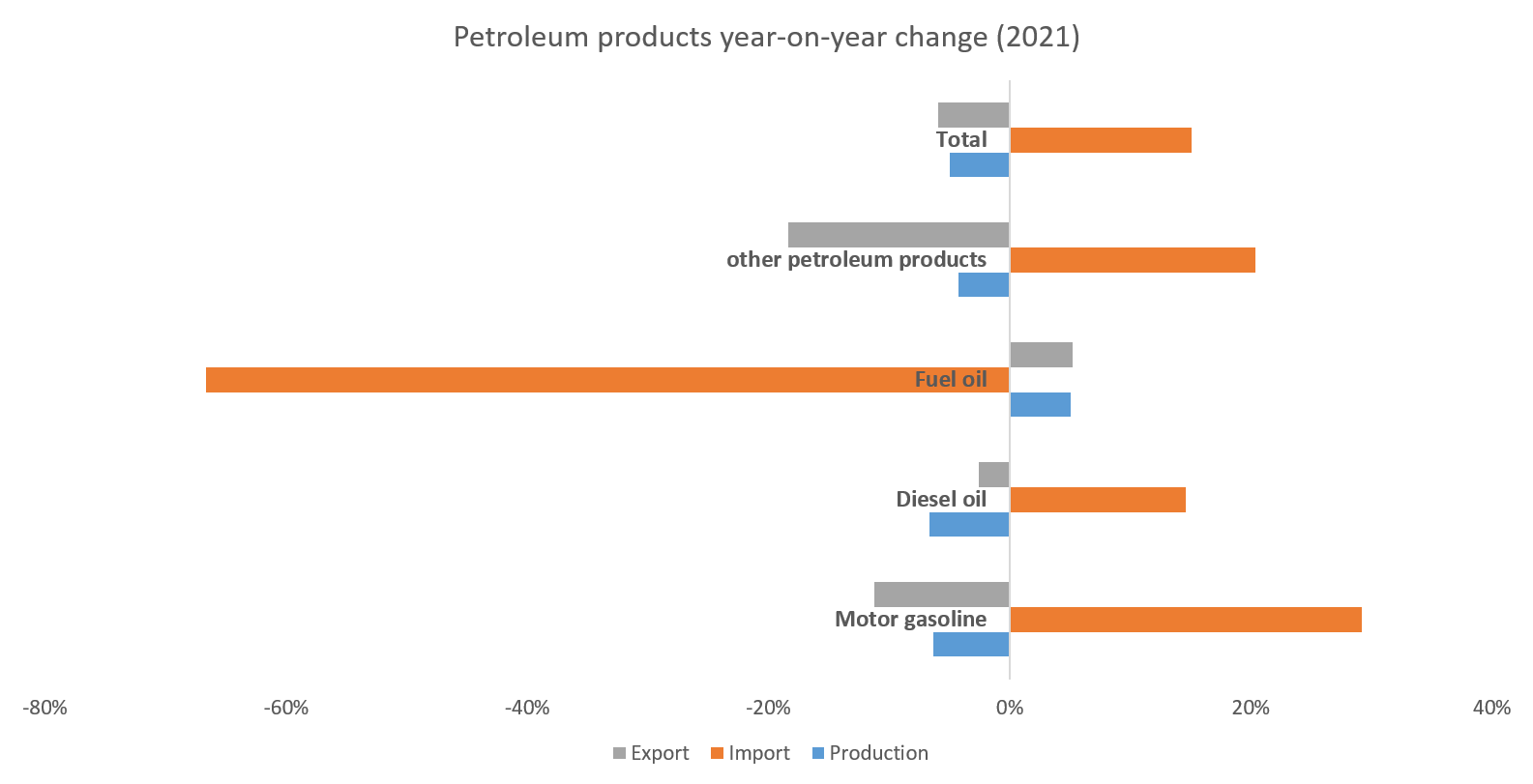March 7th, 2022 - An overview of the Croatian Energy Sector 2021.
The energy sector is a hot topic these days, and it is not a coincidence since rising prices of electricity, natural gas, and crude oil determine the prices in the overall economy. Energy prices determine the production costs, transportation costs, electricity costs, heating costs among many others. There is a rising concern over the ecological impact of the energy sector as well as the geopolitical impact that has never been more relevant.
Taking into consideration the aforementioned effects, I will shortly go through the energy statistics for 2021 reported by DZS which will give a short description of the Croatian energy sector as it was in 2021.
ELECTRICITY
In 2021, Croatia had total net production of electricity at 14 686 GWh, which is an increase of 14% compared to 2020. Exports and imports amounted to 7505 and 11 342 GWh which leads to 18 359 GWh of electricity available for the inland market. Exports recorded the highest growth with a 28% increase compared to 2020. It should be noted that the imports also include electricity produced by the nuclear power plant Krško in Slovenia of which HEP (Croatian state-owned electricity group) holds 50%.

In 2021, 48.8% of the electricity produced in Croatia came from hydropower, 29.6% from thermal power plants and CHP on fossil fuels, 14% from wind power, and 6.5% from thermal power plants and CHP on renewable fuels. Solar power plants and geothermal power plants accounted for only 1%. Around 70% of Croatia's total net production comes from renewable resources.

NATURAL GAS
In 2021, production of natural gas in Croatia amounted to 780 mln m3, which is a decrease of 12% compared to 2020. Imports amounted to 2240 mln m3 with an increase of 4%, while exports reached 76 mln m3. From natural gas that is available for the inland market, 76.5% comes from imports. Croatia is clearly a natural gas net importer with an export-to-import ratio of 0.03.
CRUDE OIL
In 2021, the production of crude oil in Croatia reached 558 thousand tonnes, a decrease of 4.6% compared to 2020. Imports were at 1767 and exports at 490 thousand tonnes. Both imports and exports were experiencing a year-on-year decrease with 9.2% and 22.5% each, respectively. Refinery input in 2021 was 1849 thousand tonnes which were also lower by 5.8%. Again, as with natural gas, Croatia is a crude oil net importer with an export-to-import ratio of 0.27.
PETROLEUM PRODUCTS
In 2021, 2461 thousand tonnes of petroleum products were produced in Croatia which is a decrease of 4.9% compared to 2020. Gas/Diesel oil had the biggest share with 45%, followed by motor gasoline with 24%.

All observed categories of petroleum products experienced a decrease in the level of production, except for fuel oil which saw an increase of 5%. The same holds for imports and exports, all of the categories except fuel oil saw an increase in imports and decrease in exports compared to 2020.

Looking at the export-import ratio we can see that Croatia is a net exporter in both motor gasoline and fuel oil with ratios of 1.875 and 21.91 in that order. On the other hand, Croatia is a net importer of Gas/Diesel oil and other petroleum products with ratios of 0.49 and 0.59. The category of petroleum products as a whole also has higher imports than exports with a ratio of 0.73.
CRUDE FUELS
Crude fuels are made of hard coal, coke, and brown coal. Croatia does not produce either of these three subcategories of crude fuels. In 2021 Croatia has imported 669 thousand tonnes of hard coal, 29 thousand tonnes of coke, and 4 thousand tonnes of brown coal. Comparing the import data with 2020, we can observe an increase of both hard coal and coke imports by 13.4% and 3.6% respectively. On the contrary brown coal, imports have decreased by 77.8%.
For more, check out our business section.


